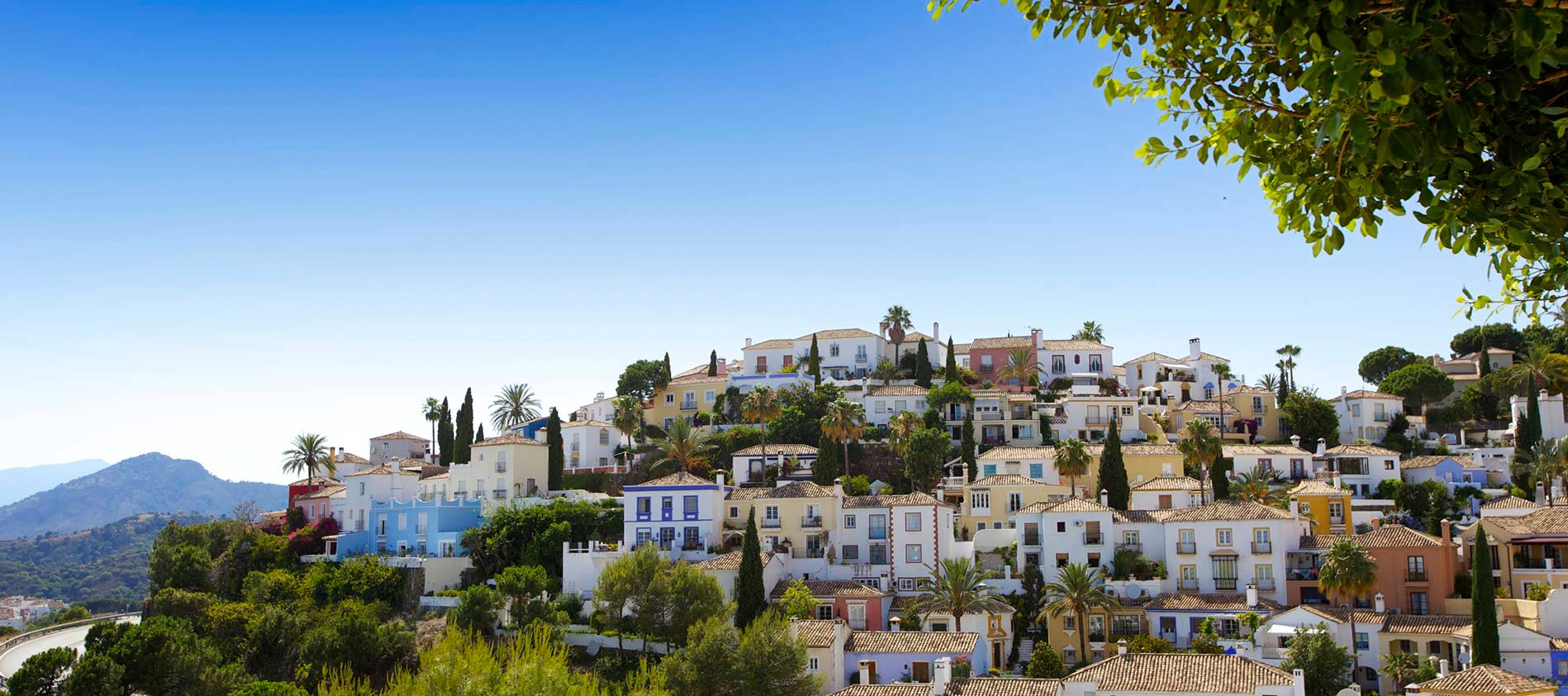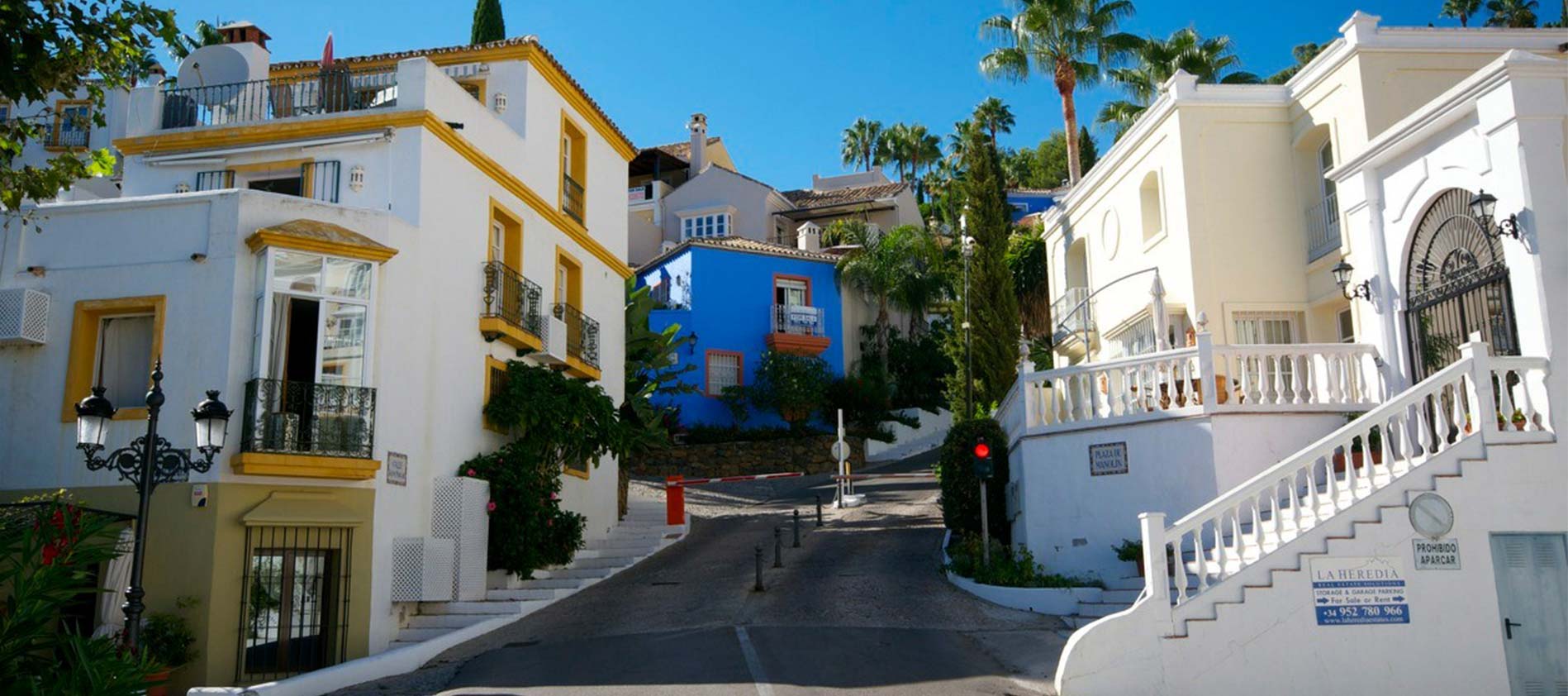With its winding cobbled streets, pretty plazas, splashing fountains and beautiful architecture, La Heredia has been inspired by the design of traditional Andalucian pueblos, and is near some of the finest golf courses on the Costa del Sol.
It is beautifully situated in the foothills of the Sierra Blanca mountains.

Urbanization La Heredia
As an owner in this historic pueblo you have inherited a part of Andalucian history.
The vast tract of land which included neighbouring El Madronal was first acquired by an industrialist, Don Manual Agustin Heredia, in the early 1800’s after arriving from Rioja in northern Spain. It was densely forested with pine and cork oak trees and these trees were to be used as fuel for the family’s iron works just east of Marbella.
Many of the workers were gypsies and he foiled an effort by the central Spanish government at that time to expel those who were not baptised or did not have properly registered family names. He did this by announcing to the Civil Governor of Malaga Province, accompanied by a notary and a priest, that every one of his gypsy workers would be baptised and bear the Heredia family name. It was a generous gesture which paid dividends 130 years later.
About 1980 two descendents of the family – Francisco (Paco) Parlade, a gifted and creative architect, and his equally gifted brother, Jaime, who was one of Spain’s top interior designers – decided to build a unique pueblo called La Heredia. They identified a horse shoe shaped hillside area with its back against the foothills of the Sierra de Ronda and its south facing front commanding panoramic views of the coast, the Mediterranean, the rock of Gibraltar and further to the Rif mountains of Morocco. It is these views that are so entrancing for all of us today.
The daytime interplay of light on the sea contrasts with the night time lights of the fishing boats. On the north African coast the lighthouse of the Spanish enclave, Ceuta, is regarded as the official meeting place of the Atlantic Ocean and Mediterranean Sea. Its powerful warning rotating lights are visible on clear nights.
The first group of houses was finished in the early 1980’s. Paco Parlade was determined that they should be in the rural Andalucian style. Floors were of marble or terracotta and bedrooms were often downstairs because it is cooler whilst living areas upstairs commanded the views. Jaime Parlade was equally determined that the interiors would also reflect historic simplicity. Moorish and Andalucian influences can be seen by the beautiful interior ceramic tiles, open fireplaces, front doors and decorative iron work on windows and balconies. There are many fascinating courtyards, alleyways, plazas, fountains and the gardens are restful and beautiful.
The descendents of the gypsies then played their part and discovered many antique and original doors, rejas (window grilles) and other iron work throughout Andalucia. Paco Parlade often altered his designs to accommodate these authentic artifacts.
Often plazas and streets are named after family members and old retainers – for example Calle Francisco Ramos was named after the head guard of the family’s forest. Ana Trompillo was the wife of the family’s chief goatherd and Dona Maria Gross was a relative of Jaime Parlade.
Worldwide there have been several villages built in a way that reflects and captures the simple rural style of a country. For example the early 20th century Portmeirion in north Wales and the 1980’s development called Seaside in Florida, USA. In the authoritative book “Country Style” which examines English, French, Italian, Scandinavian, American and Spanish styles La Heredia was chosen to represent Spain. La Heredia has been featured in many architectural and interior design magazines. Often requests are received for permission to photograph for fashion, lifestyle and motoring promotions and articles.

Our pueblo is now complete with just over 200 houses.
There are two large swimming pools and a vibrant entrance where fresh bread and other produce is available.
A café con leche, a glass of something, tapas and meals can be enjoyed at the various bars, cafes and restaurants.